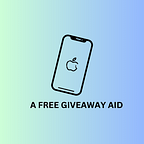Get a Free Tablet for Low Income Families 2024
In today’s digital age, access to technology is crucial for education, work, and daily life. For low-income families, however, the cost of devices like tablets can be prohibitive.
In 2024, several programs and initiatives aim to bridge this digital divide by providing free tablets to those in need. This article explores the various opportunities available, how to qualify, and the impact these programs can have on individuals and communities.
Importance of Technology Access
Access to technology is essential for:
- Education: Enables online learning and access to educational resources.
- Employment: Facilitates job searches and remote work.
- Communication: Keeps people connected with family and friends.
- Healthcare: Provides access to telehealth services and health information.
Types of Programs Offering Free Tablets
Several types of programs provide free tablets, including:
- Government Programs: Initiatives funded by federal or state governments.
- Non-Profit Organizations: Charities and non-profits focused on digital inclusion.
- Corporate Initiatives: Companies offering free devices as part of their corporate social responsibility efforts.
Government Programs
Federal Programs
- Lifeline Program: Provides discounted phone and internet services, sometimes including free tablets.
- Emergency Broadband Benefit: Offers discounts on broadband services and devices during emergencies.
State Programs
- State-Specific Initiatives: Programs vary by state, with some offering free tablets as part of broader digital inclusion efforts.
Non-Profit Organizations
National Organizations
- Computers with Causes: Donates refurbished tablets and computers to those in need.
- EveryoneOn: Connects low-income families with affordable internet services and devices.
Local Organizations
- Local Charities and Community Centers: Often have specific programs to provide technology to local residents.
Corporate Initiatives
Tech Companies
- Apple: Occasionally partners with non-profits to provide devices.
- Microsoft: Runs programs aimed at increasing digital literacy and access.
Telecommunications Providers
- Verizon: Offers programs to provide free or discounted tablets to low-income families.
- T-Mobile: Has initiatives aimed at providing devices to underserved communities.
How to Qualify for a Free Tablet
Eligibility Criteria
- Income Level: Most programs require proof of low-income status.
- Participation in Assistance Programs: Being part of programs like SNAP, Medicaid, or WIC can help qualify.
- Educational Needs: Students may qualify through school programs.
Application Process
- Documentation: Gather necessary documents such as proof of income and program participation.
- Application Forms: Fill out required forms, which can often be found online or at community centers.
- Submission: Submit applications through the specified channels, either online or in person.
Benefits of Free Tablets
Educational Benefits
- Access to Online Classes: Enables participation in virtual learning.
- Educational Apps and Resources: Provides tools for learning and homework help.
Employment Benefits
- Job Searches: Facilitates access to job listings and application portals.
- Remote Work: Enables participation in remote jobs, increasing employment opportunities.
Healthcare Benefits
- Telehealth Services: Access to online medical consultations.
- Health Information: Easy access to medical information and health tracking apps.
Social and Communication Benefits
- Staying Connected: Keeps people in touch with family and friends through social media and messaging apps.
- Community Engagement: Helps users stay informed about community events and resources.
Case Studies
Individual Success Stories
- John’s Story: How a free tablet helped John complete his education.
- Maria’s Journey: Using a free tablet to find a remote job and improve her family’s income.
Community Impact
- Community Centers: How providing tablets has empowered entire communities.
- School Programs: Success stories from schools that have distributed tablets to students.
Expert Insights
Quotes from Professionals
- Educational Experts: Discuss the impact of technology on learning.
- Social Workers: Share insights on how technology access improves quality of life.
Research Findings
- Studies on Digital Inclusion: Highlight the benefits of providing technology to low-income families.
- Impact on Mental Health: Research on how staying connected through technology can improve mental health.
Challenges and Limitations
Availability of Devices
- Supply Issues: Limited availability of free tablets can be a barrier.
- Quality of Devices: Ensuring the tablets provided are up to standard.
Connectivity Issues
- Internet Access: Without reliable internet, the tablets’ usefulness is limited.
- Rural Areas: Challenges faced by those in rural areas where connectivity is poor.
Maintenance and Support
- Technical Support: The need for ongoing technical support for users.
- Device Maintenance: Ensuring devices remain functional over time.
Future Prospects
Emerging Technologies
- 5G and Connectivity Improvements: How advancements in technology will improve access.
- Affordable Alternatives: Development of low-cost tablets and other devices.
Expansion of Programs
- Increased Funding: Potential for more funding and expansion of existing programs.
- Global Initiatives: Efforts to replicate successful programs in other countries.
Conclusion
Access to free tablets for low-income families in 2024 is a significant step towards bridging the digital divide. These devices open up numerous opportunities for education, employment, healthcare, and social connectivity. By understanding the available programs, eligibility requirements, and application processes, individuals and families can take advantage of these resources to improve their lives.
